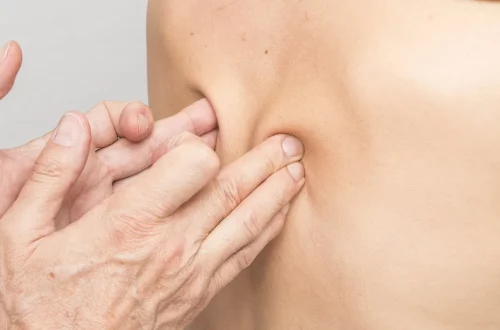
Understanding Dog Dislocated Shoulder: Symptoms and Treatment Options
A dislocated shoulder is one of the most common injuries in dogs, often resulting from high-impact activities, accidents, or even genetic predispositions. This condition occurs when the humerus, or upper arm bone, comes out of its socket in the shoulder blade. It can be a painful experience for your pet, and recognizing the signs early can make all the difference in their recovery.
Understanding how this injury affects your dog, the underlying causes, and the subsequent treatment options is crucial for any dog owner. While the shoulder joint is designed to allow a wide range of motion, it is also vulnerable to dislocation, especially in active breeds or those that engage in rough play. The symptoms can vary in severity, and timely intervention can significantly enhance the healing process.
It is important to approach this issue with a comprehensive understanding of both the physical and emotional aspects of your dog’s well-being. Being informed about the symptoms and treatment options available empowers you to make the best decisions for your furry friend. In the following sections, we will explore the signs of a dislocated shoulder, the diagnostic process, treatment methods, and preventive measures to help keep your dog healthy and active.
Recognizing the Symptoms of a Dislocated Shoulder
Identifying the signs of a dislocated shoulder in dogs is essential for timely treatment. The symptoms can vary based on the severity of the dislocation and may not always be immediately obvious. One of the most prominent indicators is sudden lameness or an inability to use the affected leg. If your dog is limping or holding their paw up, it could be a sign of a more serious issue.
Another common symptom is visible pain or discomfort. You may notice your dog whining, yelping, or showing signs of distress when the shoulder area is touched. Swelling around the joint is also a typical manifestation of this injury. If the shoulder is dislocated, the joint may appear deformed or out of alignment compared to the other side.
You should also watch for changes in behavior. Dogs in pain may become more withdrawn or aggressive, especially when the injury is touched. They might also exhibit signs of reluctance to engage in their usual activities, such as playing or walking. If your dog is showing any combination of these symptoms, it is imperative to consult with a veterinarian as soon as possible.
In addition to these physical signs, your dog may also exhibit altered posture. For example, they may hold their affected leg in an unusual position, or their body may lean toward the opposite side to compensate for the pain. Observing these subtle changes can provide valuable information for your vet during the examination.
Prompt recognition of these symptoms can lead to quicker diagnosis and treatment, ultimately improving your dog’s chances of a full recovery. Always remember, if you suspect a dislocated shoulder, it’s crucial to avoid manipulating the joint yourself, as this could exacerbate the injury.
Diagnostic Process for Shoulder Dislocation
When you take your dog to the veterinarian for a suspected dislocated shoulder, a thorough diagnostic process will typically ensue. Initially, the vet will conduct a physical examination, assessing the shoulder joint and surrounding areas for signs of pain, swelling, and deformity. This hands-on evaluation helps to determine the severity of the injury.
After the physical examination, the veterinarian may recommend imaging tests such as X-rays. X-rays are essential for confirming the diagnosis of a dislocated shoulder and for ruling out any fractures or other injuries that may not be immediately visible. These images allow the vet to visualize the joint’s alignment and assess the condition of the surrounding bones and tissues.
In some cases, additional imaging techniques such as ultrasound or MRI may be utilized for a more in-depth evaluation. These methods can provide detailed views of soft tissue structures, helping to identify any damage to ligaments or tendons that may accompany a dislocated shoulder.
Once the diagnosis is confirmed, the veterinarian will discuss treatment options based on the severity of the dislocation and any associated injuries. This discussion will also include an assessment of your dog’s overall health, age, and activity level, which are all essential factors in determining the best course of action.
Being informed about the diagnostic process can help you feel more prepared and less anxious during your visit. It’s important to ask questions and clarify any doubts to ensure you fully understand your dog’s condition and the recommended treatment plan.
Treatment Options for a Dislocated Shoulder
The treatment for a dislocated shoulder in dogs varies based on the severity of the injury and the overall health of your pet. In less severe cases, the veterinarian may opt for conservative treatment methods. This typically includes rest and restricted activity to allow the shoulder to heal naturally. Anti-inflammatory medications may also be prescribed to alleviate pain and swelling.
In more severe cases, especially if the joint is significantly out of alignment, surgical intervention may be necessary. The type of surgery will depend on the specific nature of the dislocation and any additional injuries. Surgical options can include realigning the joint and securing it in place using pins, screws, or other fixation devices.
Post-surgery, rehabilitation and physical therapy play a crucial role in recovery. Your veterinarian may recommend specific exercises or refer you to a canine rehabilitation specialist to help your dog regain strength and mobility in the affected limb. This can significantly enhance your dog’s recovery process and help prevent future injuries.
Regardless of the treatment method, monitoring your dog’s progress is essential. Follow-up visits with the veterinarian will help ensure that your dog’s recovery is on track. It’s important to adhere to the prescribed activity restrictions and therapy routines to promote healing.
Lastly, always keep an eye on your dog’s behavior and adjust their care as needed. If you notice any signs of discomfort or complications during recovery, don’t hesitate to consult your veterinarian.
Preventing Shoulder Dislocations in Dogs
Preventing dislocated shoulders in dogs involves a combination of responsible pet ownership and awareness of your dog’s activity levels. One of the key factors in prevention is ensuring that your dog maintains a healthy weight. Obesity can place extra strain on joints, making them more susceptible to injuries.
Regular exercise is important, but the nature and intensity of that exercise should be appropriate for your dog’s age, breed, and physical condition. Engaging in low-impact activities such as walking or swimming can help maintain joint health without the risk of injury associated with high-impact sports or rough play.
Additionally, being mindful of your dog’s playmates can also help prevent shoulder dislocations. If your dog tends to play roughly with other dogs, supervising their interactions can help mitigate the risk of accidents. Training your dog to follow commands like “stop” or “leave it” can also aid in controlling their behavior during play.
Finally, regular veterinary check-ups are essential for monitoring your dog’s joint health. Your vet can provide advice tailored to your dog’s individual needs and suggest preventative measures based on their specific circumstances.
By taking these proactive steps, you can significantly reduce the likelihood of your dog experiencing a dislocated shoulder and ensure they lead a healthy, active life.
**Disclaimer:** This article is for informational purposes only and is not intended as medical advice. If you suspect your dog has a health issue, please consult a veterinarian for professional guidance.




